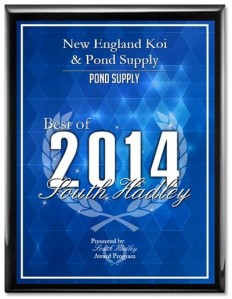Where does the ammonia originate from
Pond fish produce waste in the form of ammonia, which is released into the water through the gills. Ammonia can also originate from the dead and decaying plant material in the pond or from uneaten food, which is left in the water.
In an established pond with a functioning filtration system the ammonia is broken down by Nitrosomonas species of bacteria to a secondary product, known as nitrite.
Ammonia can exist in two forms when dissolved in water, the first is the free ammonia and this is very poisonous to fish, the second form is known as ionized ammonia which is not quite as harmful as the free form.
Ammonia can have a number of detrimental effects on pond fish such as disrupting the ability to regulate water and salts, it may also damage delicate gill tissue, causing swelling of the tissue which may hinder the absorbtion of oxygen from the water.
If the water becomes polluted with ammonia, regular partial water changes need to be undertaken to reduce the concentration of the pollutant.
In the early stages of establishing a filtration system on the pond, it may take several weeks before the ammonia level in the water begins to drop.
More Pond Water Chemistry
Alkalinity, often referred to as -carbonate hardness, or German carbonate hardness, is the measure of carbonate and bicarbonate concentrations in your aquarium water. Alkalinity is a measure of the...(click on product image for more details)
Acceptable concentration 0
A gas widely used in the disinfection of water and as an oxidizing agent for organic matter, manganese, iron, and hydrogen sulfide.
Chlorine is known to react with...(click on product image for more details)
Sometimes referred to as an algae bloom, Another factor which can influence the pH of the water is the presence of plants, most notably if there is an algae bloom in the pond. During the hours of...(click on product image for more details)
Nitrate, NO3-N,
Nitrate is the final product from the breakdown of ammonia released by the fish.
Nitrate is not especially harmful to freshwater fish but is a potent plant fertilizer and can...(click on product image for more details)
As the ammonia in the water begins to reduce, the secondary break down product, nitrite will begin to increase and this is also very poisonous to fish.
Nitrite is a skin irritant and will cause the...(click on product image for more details)
The pH is in all respects a measure of acidity and alkalinity, pH 0 - 6.99 is acid- pH 7.0 is regarded as neutral and pH 7.01 - 14.0 is alkaline. On the whole the pH is not generally a problem but it...(click on product image for more details)
Common salt, Sodium Chloride -NaCl- is commonly used in the health care and maintenance of fishes especially Koi. Salt is useful in treating parasites. It will eliminate seven out of nine parasites that...(click on product image for more details)
Partial water change outs can reduce the amount of anything dissolved in the water but not totally remove it. Although it is sometimes necessary, draining and refilling a pond should only be used as a...(click on product image for more details)

